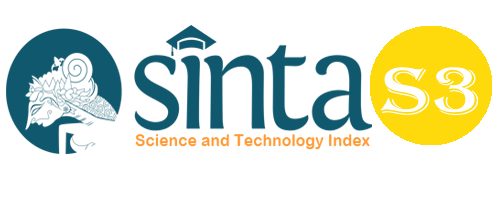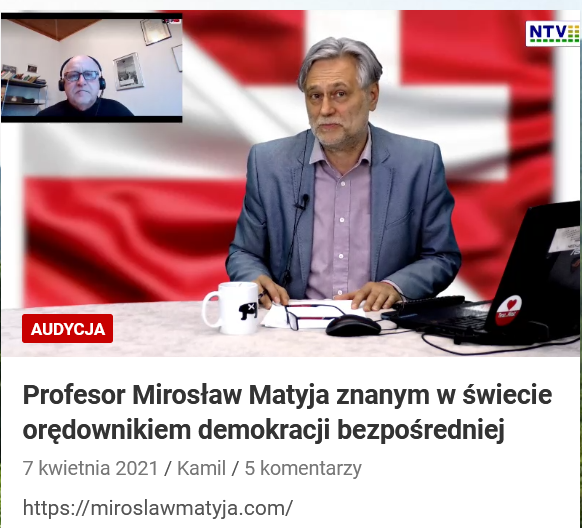Video-Based Socialization Group Activity Therapy for Blended Learning; the Validity of Learning Media
Abstract
The digital era and during the COVID-19 period, practicum activities are very constrained because they do not have supporting learning media. To support an effective learning process, one of them can be done using blended learning. The purpose of this research is to create a video-based learning media as a mental nursing practicum guide related to socialization group activity therapy and find out the results of expert validity tests related to video-based learning. This research is a descriptive study to test the validity of video-based learning media through a procedural development model. The validity test was carried out on material and media experts using a product development assessment instrument in the form of learning video learning media. The components of format, content, and language were declared valid by nine material experts and were declared to be highly qualified with an average score of 3.3. Five components (simplicity, cohesiveness, balance, shape, and color) were declared valid and one component (emphasis) was declared quite valid by two media experts with an average score of 3.25 and highly qualified for use. Video-based socialization group activity therapy learning media is declared valid and very feasible to be used as blended learning.
Keywords
Full Text:
PDFReferences
AIPNI. (2016). Kurikulum Inti Pendidikan Ners Indonesia 2016. Jakarta: AIPNI.
Al Aslamiyah, T., Setyosari, P., & Praherdhiono, H. (2019). Blended Learning Dan Kemandirian Belajar Mahasiswa Teknologi Pendidikan. Jurnal Kajian Teknologi Pendidikan, 2(2), 109–114. https://doi.org/10.17977/um038v2i22019p109
Asyhar, H. R. (2011). Kreatif Mengembangkan Media Pembelajran. Jakarta: Gaung Persada Pres.
Cooper, D., Higgins, S., & Beckmann, N. (2017). Online Instructional Videos as a Complimentary Method of Teaching Practical Rehabilitation Skills for Groups and Individuals. Journal of Educational Technology Systems, 45(4), 546–560. https://doi.org/10.1177/0047239516669104
Creswell, J. (2016). Research design Pendekatan metode kuantatif, kualitatif, dan campuran (1st ed.). Yogyakarta: Pustaka Pelajar.
Dziuban, C., Graham, C. R., Moskal, P. D., Norberg, A., & Sicilia, N. (2018). Blended learning: the new normal and emerging technologies. International Journal of Educational Technology in Higher Education, 15(1), 1–16. https://doi.org/10.1186/s41239-017-0087-5
Firdaus, A. Q., & Asyhar, B. (2018). Pengembangan media pembelajaran matematika berbasis teknologi informasi menggunakan Borland C++ untuk meningkatkan pemahaman siswa terhadap materi matriks di SMK Sore Tulungagung Kelas XII. Seminar Nasional Pendidikan Matematika (SEMNASDIKTA II), (Oktober), 35–50.
Keliat, B. A., & Pawirowiyono, A. (2014). Keperawatan Jiwa Terapi Aktivitas Kelompok. Jakarta: EGC Kedokteran.
Rosyad, Y. S. (2020). Modul Praktik Laboratorium Keperawatan Jiwa II. Bandung: Media Sains Indonesia.
Sahid. (2012). Pengembangan Media Pembelajaran Berbasis ICT. Retrieved from http://staffnew.uny.ac.id/upload/131930136/penelitian/Pengembangan+Media+Pembelajaran+Berbasis+ICT.pdf
Sugiono. (2016). Metode Penelitian Kuantitatif, Kualitatif, dan R&D (23rd ed.). Bandung: Alvabeda.
Syahmaidi, E. (2015). Pengembangan Media e-Learning Mata Pelajaran Teknologi Informasi dan Komunikasi untuk Kelas XI SMA. Jurnal Ipteks Terapan, 9(1).
Syarif, I. (2013). Pengaruh model blended learning terhadap motivasi dan prestasi belajar siswa SMK. Jurnal Pendidikan Vokasi, 2(2), 234–249. https://doi.org/10.21831/jpv.v2i2.1034
van der Meij, H., & van der Meij, J. (2016). Demonstration-based training (DBT) in the design of a video tutorial for software training. Instructional Science, 44(6), 527–542. https://doi.org/10.1007/s11251-016-9394-9
van der Meij, H., van der Meij, J., Voerman, T., & Duipmans, E. (2018). Supporting motivation, task performance and retention in video tutorials for software training. Educational Technology Research and Development, 66(3), 597–614. https://doi.org/10.1007/s11423-017-9560-z
Wright, B. M. (2017). Blended learnings student perception of face-to-face and online EFL lessons. Indonesian Journal of Applied Linguistics, 7(1), 64–71. https://doi.org/10.17509/ijal.v7i1.6859
Yamasari, Y. (2010). Pengembangan media pembelajaran matematika berbasis ICT yang berkualitas. In Seminar Nasional Pascasarjana X-ITS. Surabaya: ITS.
Zainuddin, Z., & Keumala, C. M. (2018). Blended Learning Method Within Indonesian Higher Education Institutions. Jurnal Pendidikan Humaniora, 6(2), 69–77. Retrieved from http://journal.um.ac.id/index.php/jphpISSN:2338-8110/eISSN:2442-3890
DOI: https://doi.org/10.33258/birci.v5i1.3799
Article Metrics
Abstract view : 56 timesPDF - 31 times
Refbacks
- There are currently no refbacks.

This work is licensed under a Creative Commons Attribution-ShareAlike 4.0 International License.

This work is licensed under a Creative Commons Attribution-ShareAlike 4.0 International License.

_.gif)

















_.gif)



